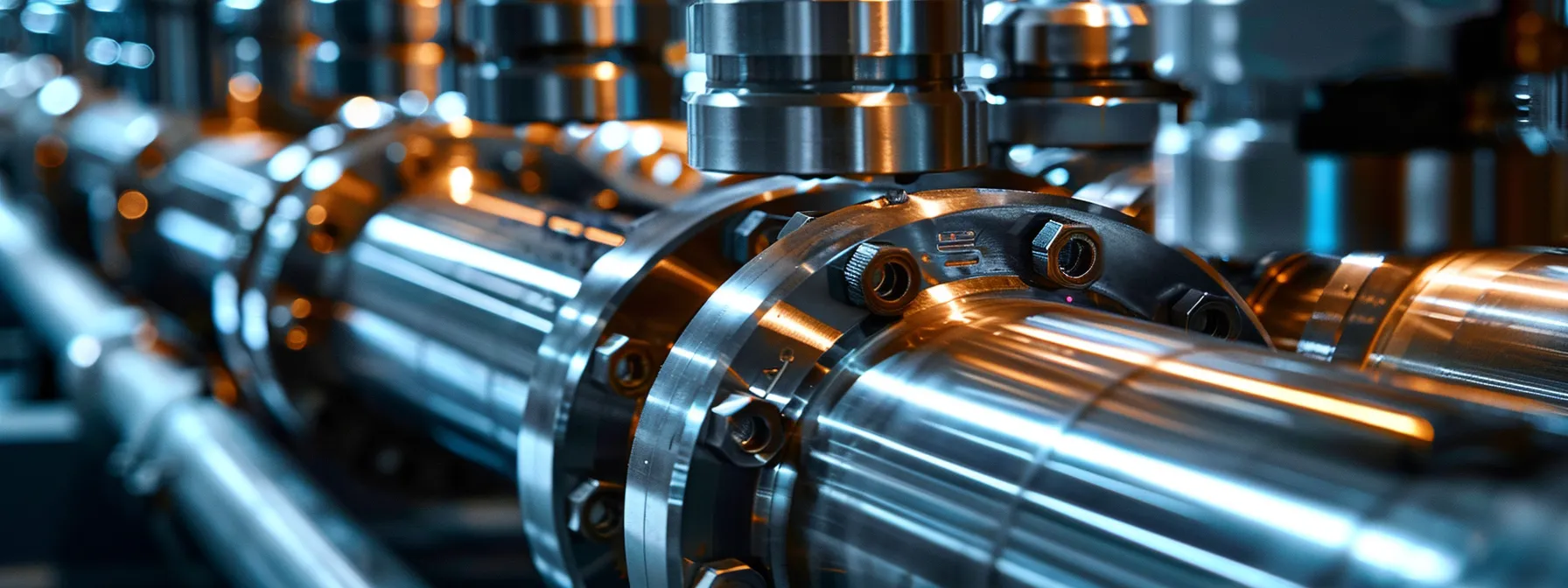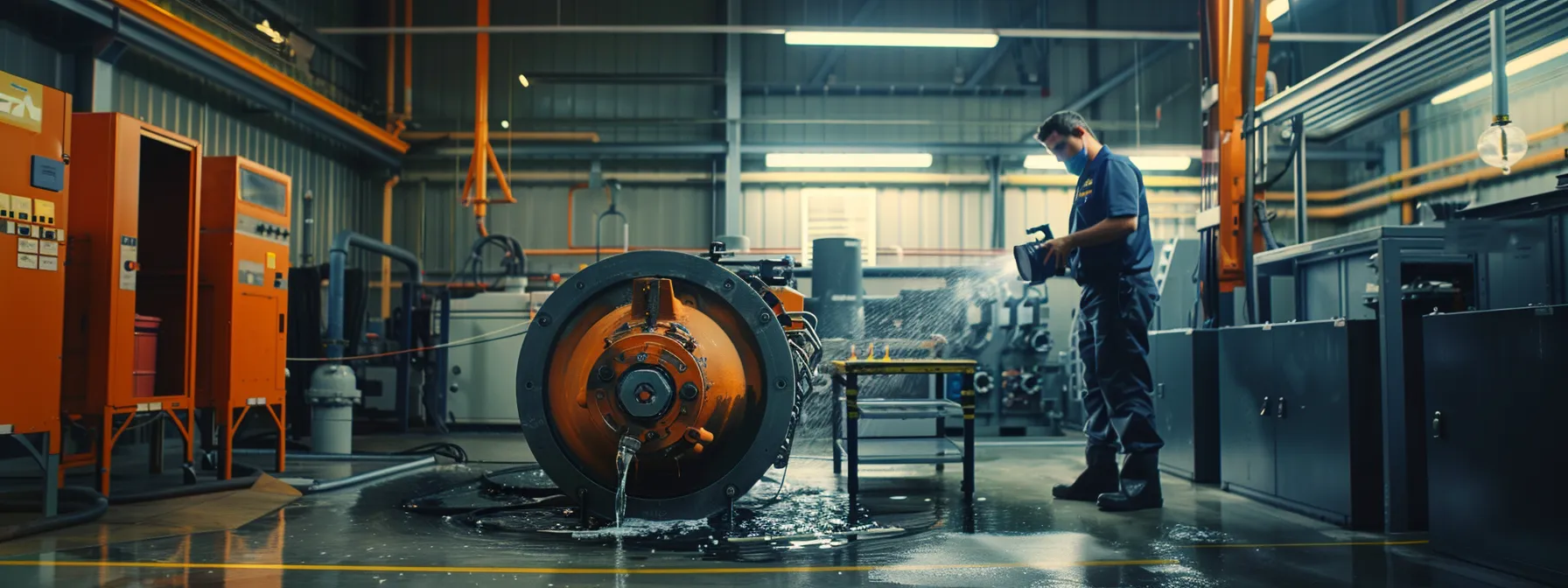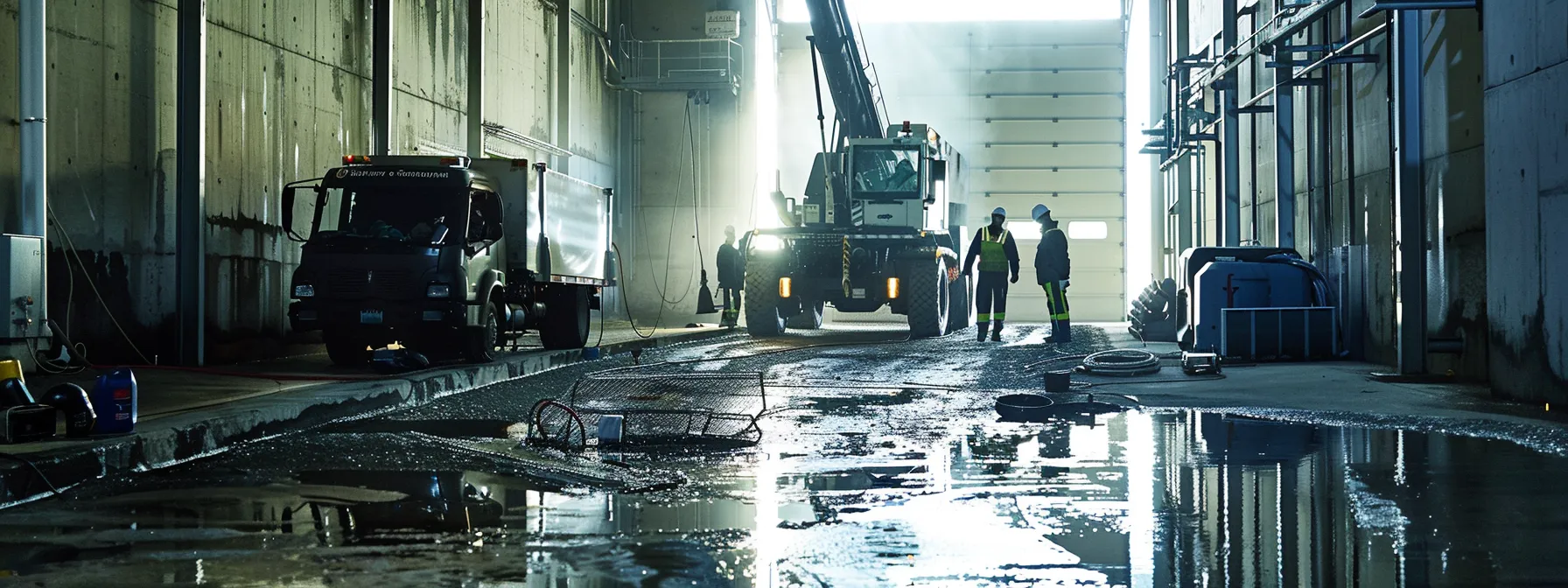Avoiding Common Drain Cleaning Mistakes in Businesses
Are drain clogs disrupting operations in your business? Many companies overlook critical drain cleaning practices, leading to costly downtime and repairs. This article will highlight common mistakes made in commercial settings and offer best practices for effective maintenance. Readers will discover the importance of professional help and how incorporating advanced technology can enhance their drain cleaning strategy. By addressing these issues, businesses can avoid interruptions and improve their overall efficiency. Engage with the content to learn how to protect your investment and maintain smooth operations.
Key Takeaways
- Regular drain cleaning prevents costly repairs and ensures smooth operations for businesses
- Using harsh chemicals can damage plumbing and create further drainage issues
- Tailoring cleaning strategies to specific environments boosts efficiency and enhances customer satisfaction
- Continuous monitoring and adjustments are crucial for effective drain maintenance practices
- Eco-friendly solutions promote sustainability and contribute to a healthier environment for customers
Understanding Common Drain Cleaning Errors in Commercial Settings

Identifying frequent missteps in drain maintenance and drain cleaning services is essential for businesses to ensure smooth operations. Recognizing signs of ineffective drain cleaning practices, such as persistent backups or unpleasant odors, can prevent costly sewer repairs. Assessing the impact of these errors not only affects overall functionality but can also hinder customer service. Understanding these elements is vital for maintaining effective water heater services and drain cleaning services, and providing a conducive environment for customers.
Identifying Frequent Missteps in Drain Maintenance
Businesses often overlook the importance of regular commercial drain cleaning, leading to mismanagement in drain maintenance. One common mistake is using over-the-counter drain cleaners that may cause more harm than good. These products can damage pipes and create further clogs, resulting in urgent needs for emergency drain cleaning services and costly repairs down the line.
Another frequent misstep involves ignoring the unique needs of specific environments, such as in restaurant drain cleaning services. Failing to account for grease buildup can lead to persistent blockages and unpleasant odors, detracting from the customer experience. Understanding these aspects is essential for establishing effective drain maintenance practices that promote smooth operations and customer satisfaction.
Recognizing Signs of Ineffective Drain Cleaning Practices
One of the most prominent signs of ineffective drain cleaning practices is the presence of persistent backflow, which can indicate deeper issues within the sewer and drain system. Businesses experiencing this problem may also notice frequent backups that disrupt daily operations, signaling the need for professional drain cleaning services. Recognizing these early warning signs can prompt timely action, preventing further complications and potentially costly sewer line repair services.
Unpleasant odors emanating from drainage systems can also signify ineffective cleaning methods, often caused by accumulated debris or grease within commercial drains. This not only creates an unwelcoming environment for customers but could also lead to health concerns if not addressed promptly. Awareness of these indicators allows business owners to take proactive steps, such as hiring drain cleaning services, ensuring that their drainage systems remain functional and hygienic.
Assessing the Impact of Errors on Business Operations
Errors in drain cleaning can significantly disrupt business operations, often leading to costly damages and unexpected repairs. For instance, a minor leak in a pipe can result from inadequate inspection and maintenance, creating an environment where organic matter accumulates and exacerbates blockages. This situation can compel businesses to temporarily close, impacting revenue and customer satisfaction.
Moreover, unresolved issues in sink drainage systems can escalate into major challenges if left ignored. Persistent backups caused by organic matter buildup not only pose hygiene concerns but also deter patrons from returning to the establishment. By prioritizing effective drain cleaning practices and regular inspections, businesses can mitigate these risks, ensuring smooth operations and fostering a positive experience for customers.
Mistakes in drain cleaning can cost more than time; they can mean lost business. To avoid these pitfalls, understanding the best practices in professional drain cleaning is essential.
Best Practices for Professional Drain Cleaning

Utilizing appropriate tools for different drain types, such as specialized augers for grease traps or high-pressure hoses for clogged drains, is vital for effective maintenance. Establishing regular maintenance schedules and training staff on proper drain care techniques can prevent issues before they escalate. Lastly, ensuring compliance with local regulations promotes an environmentally friendly approach to drain cleaning, further protecting business interests and customer health.
Using Appropriate Tools for Different Drain Types
Utilizing the right tools for different drain types is essential for maintaining proper drainage and preventing severe issues related to waste buildup. For instance, commercial establishments often deal with high volumes of waste in bathrooms and kitchens, making specialized equipment, like drain snakes for typical clogs or hydro-jetting for more stubborn blockages, critical for effective cleaning. Business owners should opt for reliable cleaners specifically designed for their drain systems, ensuring that odors and debris are effectively eliminated without causing damage.
Furthermore, understanding the unique requirements of each drainage system enhances the effectiveness of maintenance practices. Waste from commercial kitchens may demand robust solutions that address greases and heavy food particles, while bathrooms often require lighter aids that tackle soap buildup and hair clogs. By selecting appropriate tools tailored to the specific characteristics of their drainage systems, businesses can minimize recurring issues and ensure a more pleasant environment for their customers:
| Drain Type | Recommended Tools | Common Issues Addressed |
|---|---|---|
| Kitchen Drain | Hydro-jetting, Drain Snakes | Grease buildup, Food debris |
| Bathroom Drain | Plumber’s Auger, Enzymatic Cleaners | Hair clogs, Soap scum |
| Main Sewer Line | CCTV Inspection, High-pressure Hydro-jetting | Major blockages, Tree roots |
Implementing Regular Maintenance Schedules
Implementing regular maintenance schedules is essential for businesses aiming to avoid common drain cleaning mistakes. Establishing these schedules helps prevent corrosion of pipes and reduces reliance on harmful chemical drain cleaners, which can lead to further plumbing issues. By proactively managing drains, business owners ensure functionality, ultimately fostering a healthy environment that supports indoor air quality.
Regular maintenance also includes checking pumps and drains in areas such as showers to keep them flowing smoothly. Scheduling inspections and cleanings can identify potential problems early, allowing for timely interventions before minor issues escalate into major disruptions. This approach not only saves costs associated with emergency repairs but also enhances customer satisfaction by maintaining a clean and efficient facility.
Training Staff on Proper Drain Care Techniques
Training staff on proper drain care techniques is vital for preventing common drain cleaning mistakes in businesses. Employees should understand the significance of maintaining equipment such as sump pumps, which help manage excess water and prevent flooding. Routine checks and correct usage can minimize issues related to blocked drains and the subsequent buildup of organic matter that attracts pests.
Incorporating training sessions focused on pest control can equip staff with the knowledge needed to avoid creating environments conducive to infestations. For instance, ensuring that food waste is promptly removed from kitchen drains can inhibit pests from becoming a problem. Regular training not only fosters a culture of proactive maintenance but also prepares employees to respond appropriately in emergency situations, effectively reducing disruption and ensuring customer satisfaction:
| Training Focus | Key Benefits |
|---|---|
| Proper Sump Pump Maintenance | Prevents flooding and structural damage |
| Proactive Pest Control Measures | Reduces risk of infestations |
| Emergency Response Protocols | Minimizes disruption and maintains operations |
Ensuring Compliance With Local Regulations
Ensuring compliance with local regulations concerning drain cleaning is essential for businesses to avoid potential fines and repair costs related to improper waste management. Understanding the guidelines around stormwater drainage and the use of specific drain cleaners is critical, as non-compliance can lead to significant legal repercussions and environmental damage. Business owners should remain informed about their municipality’s requirements for cleaning services to ensure that their maintenance practices align with established standards.
Regular inspections can help businesses identify any areas where they may fall short of compliance, especially regarding the disposal of cleaning agents and the handling of clogs. Working with professional cleaning services that are knowledgeable about local regulations ensures that drain cleaning practices meet all necessary guidelines, minimizing the risk of violations. By prioritizing compliance, businesses not only contribute to a healthier environment but also enhance their reputation among customers and the community at large.
Even the best techniques have their limits. Turning to the experts can make all the difference in keeping drains clear and functioning well.
Importance of Professional Help in Drain Cleaning

Expert drain services offer numerous advantages, including effective installation and use of professional-grade cleaners to combat mineral buildup. Recognizing when to call a professional can prevent further damage and costly repairs. Additionally, assessing the cost implications between DIY methods and professional support can lead to informed decisions, ultimately enhancing the longevity and functionality of business drains.
Evaluating the Benefits of Expert Drain Services
Engaging expert drain services allows businesses to address drainage issues with precision and effectiveness. Professionals possess specialized knowledge and tools required to tackle persistent blockages, ensuring thorough cleaning without risking damage to plumbing systems. Their experience helps identify underlying problems that may not be immediately visible, preventing future malfunctions that could disrupt operations.
Furthermore, relying on professionals promotes compliance with local regulations and environmental standards, minimizing potential liabilities. By investing in expert drain services, businesses can maintain efficient operations, improve customer satisfaction, and extend the lifespan of their plumbing systems. These proactive measures lead to long-term savings and a healthier work environment for employees and patrons alike:
| Benefit | Description |
|---|---|
| Expertise | Professionals have the skills to identify and resolve hidden drainage issues effectively. |
| Compliance | Ensures adherence to local regulations regarding waste management and drainage. |
| Cost-efficiency | Investing in professional services prevents costly repairs and maintains system longevity. |
Understanding When to Call a Professional
Recognizing the right time to call a professional drain cleaning service can significantly impact a business’s operations. For instance, persistent slow drains or frequent backups often indicate underlying issues that may not be resolved with basic cleaning solutions. Engaging an expert ensures a thorough inspection, allowing for the identification and resolution of problems that might escalate into costly repairs if ignored.
Additionally, businesses experiencing unpleasant odors from their drainage systems should seek professional assistance promptly. Odors are often signs of accumulated debris or grease, indicating deeper maintenance needs. By addressing these issues early with expert help, businesses can prevent hygiene-related complications and maintain a welcoming environment for customers.
Cost Implications of DIY vs. Expert Services
The cost implications of DIY drain cleaning often lead businesses to overlook effective maintenance solutions. While it may seem economical to handle minor clogs with store-bought products, these temporary fixes can result in greater expenses if they cause damage to plumbing systems or lead to more significant blockages. Investing in expert services ensures that drain problems are addressed correctly from the start, ultimately saving businesses from costly repairs and lost revenue.
Engaging professionals not only mitigates risks associated with improper maintenance but also provides long-term financial benefits. For instance, experts can offer tailored solutions suited to specific business needs, reducing the chances of recurrent drainage issues. By prioritizing quality services over quick fixes, businesses can maintain optimal plumbing performance, thereby enhancing operational efficiency and customer satisfaction.
Professional help lays the foundation for effective drain cleaning. With that foundation, the integration of advanced technology reveals new levels of efficiency and precision.
Incorporating Advanced Technology in Drain Cleaning

Utilizing advanced technology in drain cleaning significantly enhances the effectiveness of maintenance practices in businesses. Video inspection allows for accurate diagnosis of issues, ensuring targeted solutions. Eco-friendly drain cleaning solutions promote safety and sustainability, while water jetting techniques offer powerful cleaning results. Each of these innovations contributes to avoiding common mistakes and ensures optimal drainage performance for commercial establishments.
Utilizing Video Inspection for Accurate Diagnosis
Utilizing video inspection technology revolutionizes the approach to drain cleaning, allowing professionals to accurately diagnose issues within a drain system without invasive procedures. This method enables drain cleaning experts to visually assess the condition of pipes, identifying clogs, cracks, and other potential problems that may not be visible through traditional cleaning methods. By pinpointing the precise location and nature of the issue, businesses can avoid unnecessary repairs and ensure that maintenance efforts are targeted and effective.
Moreover, video inspection provides valuable insights into the overall health of drainage systems, facilitating proactive maintenance. This level of detail empowers businesses to address minor issues before they escalate into major disruptions, ultimately preserving operational efficiency and minimizing costs. Through expert analysis of video footage, drain cleaning professionals can make informed recommendations, leading to a longer lifespan for plumbing systems and an enhanced customer experience in commercial environments.
Exploring Eco-Friendly Drain Cleaning Solutions
Eco-friendly drain cleaning solutions offer businesses a responsible approach to maintaining their drainage systems while minimizing environmental impact. These green alternatives often use natural enzymes and bacteria that safely break down grease, food particles, and other organic materials without the harsh chemicals that can damage plumbing infrastructure. Investing in these sustainable options not only safeguards the environment but also promotes a healthier space for employees and customers alike.
Utilizing eco-friendly drain cleaners showcases a commitment to sustainability, which can enhance a brand’s reputation among consumers. For example, regular maintenance with environmentally friendly products reduces the risk of harmful runoff that can contaminate local water supplies. Businesses that implement these practices position themselves as environmentally conscious and may attract customers looking for companies that prioritize environmental responsibility:
- Use natural enzymes to break down organic materials.
- Reduce environmental impact by avoiding harsh chemicals.
- Promote a healthier space for employees and customers.
- Enhance brand reputation with eco-conscious practices.
- Avoid harmful runoff into local water supplies.
Adopting Water Jetting Techniques for Effective Cleaning
Water jetting techniques represent a powerful and efficient method for cleaning drains in commercial settings. This approach uses high-pressure water streams to clear stubborn blockages, including grease, food particles, and mineral buildup, which traditional cleaning methods may fail to address. By adopting water jetting, businesses can effectively maintain clean and functional drainage systems, ultimately reducing the risk of backups and service disruptions.
Implementing water jetting as part of a comprehensive drain maintenance strategy enhances overall plumbing efficiency. Businesses often experience improved flow rates and reduced need for frequent cleaning interventions, leading to long-term cost savings. This technique not only addresses existing issues but also prevents future complications, making it a practical solution to common drain cleaning mistakes in commercial environments.
As technology sharpens the tools for clear drains, a solid plan becomes essential. Crafting an effective strategy will ensure lasting cleanliness and peace of mind.
Developing an Effective Drain Cleaning Plan

Customizing strategies for different commercial environments is crucial for effective drain maintenance. Setting realistic goals and expectations helps businesses stay on track, while continuous monitoring and adjustments ensure that the plan remains effective over time. These elements contribute to maintaining a functional drainage system and preventing common mistakes that may lead to costly disruptions.
Customizing Strategies for Different Commercial Environments
Customizing drain cleaning strategies for different commercial environments is essential for effective maintenance and optimal functionality. For example, restaurants often experience high levels of grease and food debris that require specialized cleaning methods tailored to address these unique challenges. By implementing strategies such as regular hydro-jetting and thorough grease trap maintenance, business owners can significantly reduce the risk of clogs and maintain a clean and efficient drainage system.
In contrast, offices and retail spaces typically deal with lighter waste, making a different approach necessary. Routine inspections and the use of enzymatic cleaners can effectively manage minor clogs and prevent buildup in less demanding drain systems. Adapting cleaning practices to fit the specific needs of various commercial settings ensures that businesses can avoid common drain cleaning mistakes, enhancing operations and supporting a positive experience for customers.
Setting Realistic Goals and Expectations
Setting realistic goals and expectations for drain cleaning is vital for businesses looking to maintain effective operations. By understanding the specific needs of their drainage systems, business owners can develop actionable maintenance schedules that address potential issues before they escalate. This proactive approach not only ensures consistent functionality but also helps avoid the common mistakes that can lead to costly repairs and disruptions.
For example, a restaurant may set a goal to perform monthly grease trap inspections, recognizing the unique challenges presented by high volumes of food waste. By establishing clear objectives and timelines, businesses can create a structured maintenance plan that emphasizes routine inspections and minor repairs, ultimately contributing to improved drainage performance and customer satisfaction.
Monitoring and Adjusting the Plan as Needed
Monitoring and adjusting the drain cleaning plan is essential for maintaining effective operations in businesses. Regular evaluations of the drain system allow owners to identify changes in performance, such as slower drainage or increased odors, signaling the need for adjustments in routine maintenance. This proactive approach helps address emerging issues before they develop into more significant problems, ensuring that drainage systems continue to function efficiently.
Additionally, business owners should document maintenance schedules and outcomes to track the effectiveness of their cleaning practices. By analyzing this data, they can make informed adjustments to their strategies, allocate resources appropriately, and optimize cleaning frequencies. This level of oversight not only enhances the functionality of drainage systems but also supports a clean and inviting environment for customers:
| Maintenance Activity | Frequency | Expected Outcome |
|---|---|---|
| Grease Trap Inspection | Monthly | Reduced clogs and odors |
| Routine Drain Snaking | Quarterly | Improved drainage speed |
| Video Inspection | Biannually | Identifying hidden issues |
A well-crafted plan lays the groundwork for success. Now, let’s examine how real experiences shaped effective drain maintenance strategies.
Learning From Case Studies of Successful Drain Maintenance

Analyzing real-world examples of best practices in drain maintenance provides valuable insights for businesses aiming to enhance their operations. Highlighting common mistakes alongside effective solutions will offer practical solutions to avoid disruptions. By gathering lessons from these case studies, businesses can refine their future drain maintenance strategies, ensuring efficiency and compliance in their systems.
Analyzing Real-World Examples of Best Practices
Analyzing successful case studies in drain maintenance reveals the significance of proactive management. For instance, a mid-sized restaurant that implemented a regular cleaning schedule, combined with the use of enzymatic solutions, significantly reduced clog incidents and enhanced customer satisfaction. These practices not only maintained effective drainage but also contributed to a healthier environment, showcasing a clear benefit from consistent attention to drain maintenance.
Another example includes a retail establishment that adopted periodic video inspections to identify potential issues before they escalated. By recognizing hidden blockages early, the business avoided costly repairs and minimized disruptions to operations. This strategic approach to drain cleaning has proven effective, demonstrating how tailored maintenance strategies can lead to long-term operational efficiency and improved customer experiences.
Highlighting Common Mistakes and Their Solutions
One common mistake businesses make in drain maintenance is neglecting routine inspections, which can lead to unexpected clogs and system failures. Learning from successful case studies, establishments that implemented regular check-ups identified issues early, preventing costly disruptions and maintaining smooth operations. For instance, a local café enhanced its customer experience by incorporating weekly inspections, allowing them to address potential blockages caused by food debris before they escalated.
Another frequent error involves the use of harsh chemical cleaners that can damage plumbing infrastructure. Successful businesses, such as a chain of restaurants, shifted to eco-friendly cleaning solutions, effectively reducing buildup without risking pipe integrity. This not only protected their plumbing but also promoted a healthier environment for patrons, illustrating the importance of selecting appropriate maintenance practices tailored to specific operational needs.
Gathering Lessons for Future Drain Maintenance Strategies
Gathering lessons from successful drain maintenance strategies can significantly enhance a business’s approach to preventing common drain cleaning mistakes. For example, a restaurant that adopted a rigorous inspection schedule managed to detect potential clogs early, thereby avoiding costly disruptions in service. By prioritizing routine evaluations and implementing a strategy tailored to their specific needs, businesses can address drainage issues proactively, ensuring smooth operations and customer satisfaction.
Furthermore, the experience of a commercial kitchen that transitioned to eco-friendly cleaning products demonstrates the benefits of adjusting maintenance practices. The switch to sustainable solutions not only curtailed harmful chemical use but also improved drainage efficiency and contributed to a healthier environment. These practical insights emphasize the importance of ongoing evaluation and adaptation in drain maintenance to align with best practices and regulatory standards:
- Implement regular inspection schedules to identify issues early.
- Adopt eco-friendly cleaning solutions to promote sustainability.
- Tailor maintenance strategies to meet the unique needs of each business environment.
Essential Key Takeaways for Effective Drain Cleaning Practices
Avoiding common drain cleaning mistakes is crucial for businesses striving to maintain operational efficiency and customer satisfaction. Regular maintenance, appropriate tool use, and adherence to local regulations drastically reduce the risk of clogs and costly repairs. Training staff on effective drain care and employing eco-friendly solutions contribute to long-term sustainability. By prioritizing these practices, businesses can ensure a hygienic environment and enhance their overall reputation in the community.







